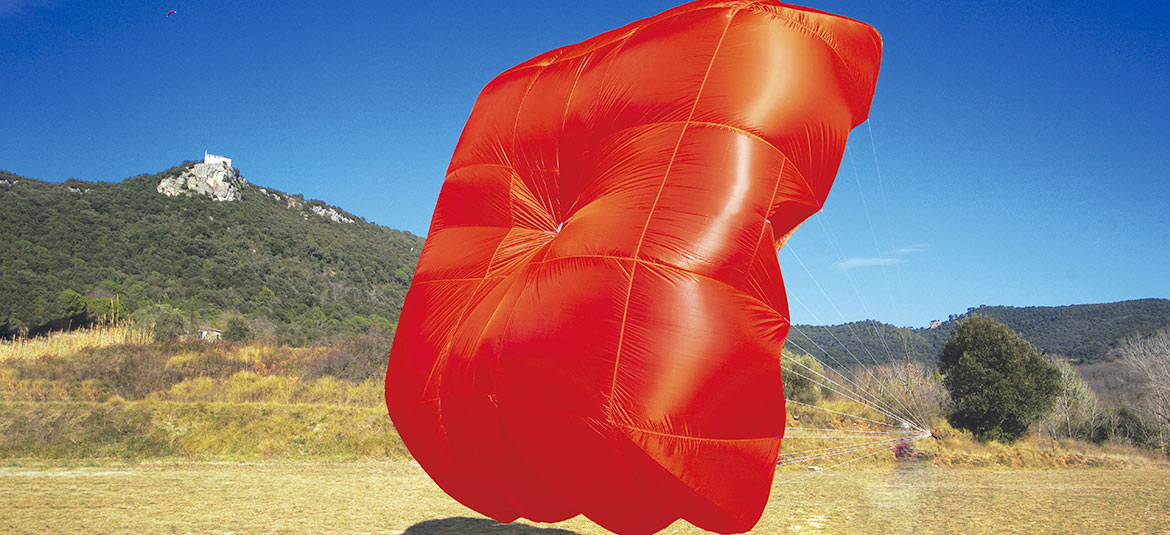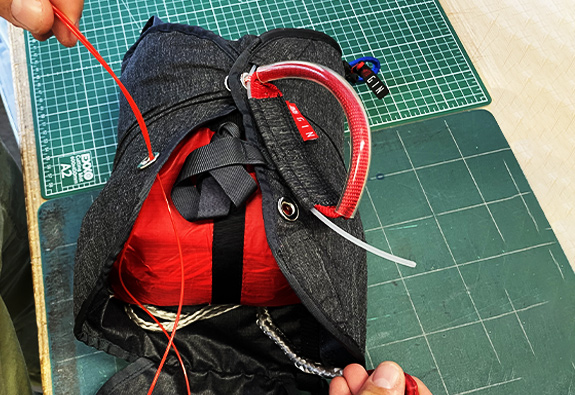What's the difference between a rescue parachute and a front rescue container ?


This is one of the questions that comes up fairly quickly when considering the purchase of light equipment for free flight, paragliding or paramotoring. It's a legitimate question, since the rescue system is an essential safety device, and it's important to understand how it works to ensure that it's operational.
Here, we'll take a closer look at the basic differences between a rescue parachute and a harness-mounted rescue.
WHY USE A FRONT CONTAINER ?
The front container rescue system is independent of the harness. It's a pocket that's usually connected to the main carabiners, and which allows the rescue parachute to be attached to the harness. This makes it possible, for example, to have a rescue parachute while using an ultra-light harness that doesn't have an integrated rescue pocket. The rescue pocket can also be used to attach a second rescue parachute to the harness. Finally, if the handle of your rescue parachute is not very accessible, for example, you can use a belly pocket to position your rescue parachute in line with your gaze in flight, so that the handle is more accessible and visible in case of emergency.
WHAT'S THE DIFFERENCE BETWEEN A FRONT CONTAINER AND INTEGRATED RESCUE SYSTEM ?
The only difference between a front container and a harness-mounted rescue system is the attachment. The difference is not in the rescue parachute itself, but in the components surrounding it.
Front rescue container : an independent system
The front rescue container has the advantage of being able to transfer a rescue parachute from harness to harness very quickly, without having to redo the complex assembly of the rescue parachute traditionally attached to conventional harnesses.


WHAT EQUIPMENT DO YOU NEED FOR A COMPLETE FRONT CONTAINER ATTACHMENT SYSTEM ?
For a complete rescue front container, you'll need the following items :
- Paragliding Rescue Parachute
- The ventral pocket is the container in which the rescue parachute is stored.
- Risers, the length of which must be chosen to attach the parachute to either the carabiners or the shoulders. If in doubt, use 1.20 m risers, which will be compatible with any installation.
- Possibly one or more quick links to attach the risers to the harness and parachutes.
In short, there's no noticeable difference in the rescue process whether it's front container or integrated into the harness. It's more a question of ergonomics and practicality. Make sure that your entire chain is compatible to ensure proper deployment of your rescue parachute. You'll be able to enjoy your paragliding and flying experience with peace of mind, from take-off to landing !
DISCOVER OUR COMPLETE GUIDE TO PARAGLIDING RESCUE PARACHUTES :
Paragliding rescue parachutes : choosing the right equipment for your flight
What types of rescue parachute are there for paragliding ?
Is a rescue parachute compulsory for paragliding ?
How to choose a paragliding rescue parachute ?
How does a rescue parachute work ?
What's the best rescue parachute ?








